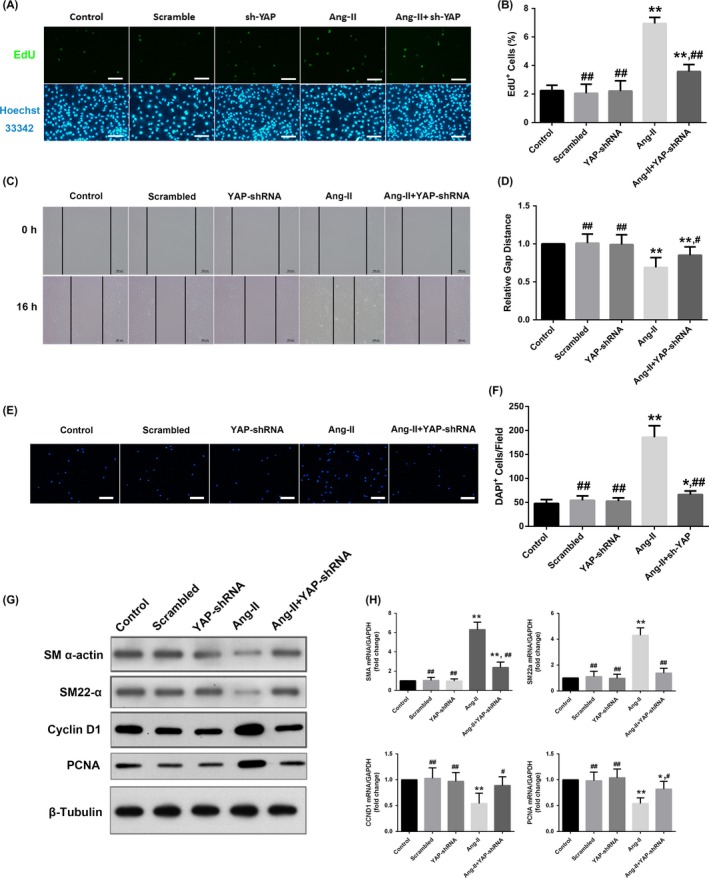Figure 5.

YAP mediated Ang II‐induced VSMCs phenotypic modulation. Rat VSMCs were transfected with either the YAP‐shRNA or scrambled control plasmids. A, YAP mediated Ang II‐induced VSMC proliferation. Quiescent VSMCs were stimulated with either 10−7 mol/L Ang II or PBS for 24 h and then incubated with an EdU labelling solution (50 μmol/L) diluted in DMEM for another 2 h. The cells were subjected to immunofluorescence staining for EdU (green) and counterstained with Hoechst 33342 to visualize the nuclei (blue). B, Quantification of the percentages of proliferating cells (EdU‐positive cells) shown in (A). C, YAP mediated Ang II‐induced VSMC migration. VSMCs were seeded into 12‐well plates and grown to a confluent density. Cell migration was assayed 16 h after a wound was scratched across the cell monolayer under serum‐free conditions, and the relative closure distance was measured. D, Quantification of the gap distance relative to the control (set to 1). E, VSMCs were seeded into Transwell chambers with 8.0‐μm pores and allowed to migrate for 12 h. The migrated cells on the bottom surface of the membrane were stained with DAPI to visualize the nuclei (blue) and detected using fluorescence microscopy. F, Quantification of the migrated cells (DAPI‐positive) in low‐power field shown in (E). G, Representative Western blotting analysis of total protein lysates from the cultured rat VSMCs treated with either 10−7 mol/L Ang II or PBS for 24 h after serum starvation. H, the mRNA levels of different phenotypic markers were detected by quantitative real‐time polymerase chain reaction. The data were expressed relative to the control (set to 1) after normalization to GAPDH (served as an internal control). Scale bars in A and E represent 80 μm. All results from B, D, and F were presented as the mean ± SEM from three independent experiments with five random fields counted per experiment. *P < 0.05 compared with the control group, **P < 0.01 compared with the control group; #P < 0.05 compared with the Ang II group, ##P < 0.01 compared with the Ang II group. CCND1, cyclin D1; PCNA, proliferating cell nuclear antigen
